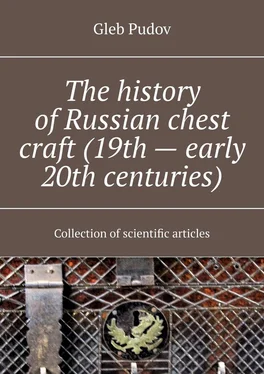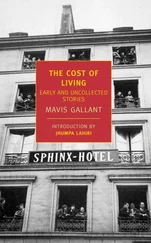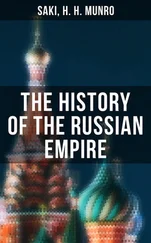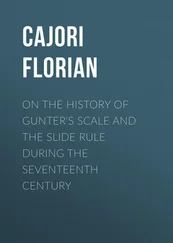German products («Geldwechsler-Schatulle», «Reise-Schreibpult») are similar to Russian and english in appearance 64 64 Kunst- und Antiquitätenauktion 25./26. September 2003. Stuttgarter Auktionshaus dr. Fritz Nagel. Katalog. – Deizisau: Druck Schefenacker, 1999, Farbtaf. 1689, 1694.
. Their internal cavities are separated by boxes and shelves. Various techniques were used in the decoration. The craftsmen of the items under consideration, made in the 18th century from walnut, maple, birch and oak, turned to intarsia, painting and coloring. The decorative design of the products is based on a combination of geometric and floral motifs. A painted glass plate is placed in the center. There are brass handles and covers. In general, these are highly artistic works of the German Baroque, created by professional craftsmen. «Podgolovnik» served as a place for keeping money of the money changer and a traveller’s writing instrument.
Norwegian «podgolovnik» 65 65 Stiftelsen Nordmøre Museum (inv. № KM.02036).
dates back to 1751. It has the same construction as other things of this kind, but slightly different proportions. The lid rises with iron curly hinges, on the sides there are simple cast handles. From the inside, the chest has several shelves (not preserved). The surfaces of the product (except for the back and side ones) are divided into rectangular segments, in each of which, in a blue frame, there is a pictorial composition consisting of images of bouquets. They are painted in the fast, improvised manner of Norwegian wood painting. The rest of the surfaces are painted red. On the edges of the lid there are inscriptions in white paint: «Ek Ols Domis (?) Ann 1751». Perhaps the thing served as a travel chest for the official.
The English product is particularly noteworthy. It has other proportions, in its shape resembling a chest of drawers 66 66 Macquoid P. A history of English furniture. In four volumes. Vol. I. The age of Oak. 1500—1660. – New York: Dover Publications, 1972, fig.158.
. It has a smooth slanted cover; the front and side walls are decorated with geometric and floral designs (low relief). The background is processed with shading. The lower half of the product slides out. The work is characterized by clarity, confidence in the work of the carver, and the easily readable ornament testifies to the rich experience of the master.
In the collection of the department of folk art of the Russian Museum there is a chest, in proportions resembling a chest of drawers (dates back to the 18th century) 67 67 Inv. № М-34.
. Its front and side walls are upholstered with slotted iron plates with a floral ornament consisting of intertwining curls (background is brown velvet). The bottom and back side are reinforced with solid iron plates. There are several shelves and drawers inside the product, the lower part can be pulled out.
Such a parallel between the north Russian and english works is not accidental, in view of the close trade ties that were established between Russia and England through the northern ports in the middle of the 16th century 68 68 It is necessary to remember not only the significant trade privileges granted by Ivan IV to English merchants, but also the presence of close cultural ties between Russia and England at that time (Накашидзе Н. Т. Русско-английские отношения во второй половине XVI в. – Тбилиси: изд-во Тбилис. гос. ун-та, 1955, С. 66, 75—77, 78, 82, 113, 114).
. It is possible that the very type of chest product, called «podgolovnik» in Russia, penetrated from Western Europe precisely through the cities of the Russian North. Moreover, such cases are known in relation to other types of Russian folk art. The researcher of folk art Lev Dinces wrote about the European origin of the so-called «Vologda glass» (embroidery), which penetrated into Russia through english merchants who traded in Arkhangelsk 69 69 Богуславская И. Я. Проблемы народного искусства в трудах Л. А. Динцеса// Сообщения ГРМ. Вып. XI. – М.: Изобразительное искусство, 1976, С. 4. In addition, according to one version, «frozen» tin as a technique for decorating chests penetrated into Russia (the Urals) from England. (Промыслы Екатеринбургского уезда Пермской губернии / собр. и обраб. под ред. П. Н. Зверева; стат. отд-ние Екатеринб. земской управы. – Екатеринбург: Екатеринб. уезд. земство, 1889, С. 10).
. In other words, the introduction of «podgolovnik» into Russia was probably the result of a brief flourishing of Russian-English relations in the 16th century.
Comparison of all these items made their differences clear. As mentioned above, they are similar only in design and shape, in all other respects they are different. This is because chests were made in different historical and cultural settings for different customers. Russian masters, having appreciated the merits of foreign works, their convenient, practical forms, adopted only the construction 70 70 The fact that in Russia (in particular, in the Russian North) also existed special devices called «podgolovnik» for sleeping testifies to the regularity of the forms of Russian and foreign chest products. They represented an inclined plane on bars. Chests called «podgolovnik» of other types were also made, but also with a sloping plane (Бломквист Е. Э. Крестьянские постройки русских, украинцев и белорусов// Восточнославянский этнографический сборник: Очерки народной материальной культуры русских, украинцев и белорусов в XIX – начале XX в. / [отв. ред. С. А. Токарев]. – М.: изд-во Акад. наук СССР, 1956. – (АН СССР. Труды Института этнографии имени Н. Н. Миклухо-Маклая. Нов. серия; Т. 31). С. 431).
. «Transplanted» in the Russian «soil», the Russian product acquired significant differences from the «originals», naturally became part of a number of domestic products. Thus, not the shape and design of this type of product has undergone changes depending on the place and time of production, but the purpose and decoration.
In this context, the question of influences loses its acuteness. It is only necessary to state that Russian and Western European artisans were participants of a single cultural process. Therefore, it is more important not to register certain influences, not to look for similarities in specific details, but to analyze the environment, conditions, circumstances that ensured the fusion of creative impulses.
It is important to point out the term «hidden existence», which is used in folklore studies to denote some of the features of the existence of works. It seems that the acceptance or rejection of certain forms and ornaments by the artisans of chests also depended on their «hidden existence» in the local tradition. Only forms of products and ornamental motifs similar to those coming from outside took root. The researcher of Russian folklore Yu. Smirnov pointed out: «… what is borrowed is what corresponds either – less often – to the old, dying ones, or – more often – to the new, emerging, norms of the borrowing folk tradition. Consequently, when stating a borrowing, one should always look for local, actually ethnic, behind it or next to it, whether it is only traces, pieces and fragments of the forgotten» 71 71 Смирнов Ю. И. Направленность сравнительных исследований по фольклору // Славянский и балканский фольклор. Обряд. Текст. – М.: Наука, 1981, С. 9—10.
. These words are true not only in relation to folklore, but also to chest production.
Читать дальше












